Discover some of the most unique holiday traditions from around the world! From quirky customs to bizarre celebrations, this listicle will take you on a fascinating journey of global festivities.
Krampus Night

Krampus Night on December 5th in Austria features a creature named Krampus who walks the streets to scare naughty kids. It’s a spooky twist on the holiday season that adds a bit of thrill and excitement to the festivities.
Krampus, a horned figure with a fearsome appearance, is often seen alongside St. Nicholas. While St. Nicholas rewards good children with gifts, Krampus deals with the naughty ones, creating a fascinating contrast in holiday traditions.
During Krampus Night, many people dress up as this frightening figure, wearing masks and costumes. They parade through the streets, ringing bells and making noise to heighten the eerie atmosphere, making it a memorable event for both locals and visitors.
Night of the Radishes

Oaxaca, Mexico, lights up on December 23rd for the Night of the Radishes. Locals transform radishes into detailed designs, creating a lively and unique festival. This tradition highlights the community’s creativity and pride in their local produce.
During the festival, participants compete for prizes by carving radishes into various shapes and scenes. The event showcases not only artistic skill but also the cultural heritage of Oaxaca. It’s a fantastic way to experience local holiday traditions.
The Night of the Radishes draws both locals and visitors, making it a significant event for the community. Street vendors offer traditional foods and crafts, adding to the festive atmosphere. It’s a perfect occasion to immerse yourself in the local culture and holiday spirit.
Gävle Goat

Every year in December, the Swedish town of Gävle builds a giant straw goat, known as the Gävle Goat. It’s a beloved tradition that attracts many visitors eager to see the impressive structure.
Despite its popularity, the Gävle Goat often becomes the target of vandals who try to set it on fire. This has happened so frequently that it has become almost as famous as the goat itself.
To protect the Gävle Goat, organizers have taken various measures over the years, such as installing security cameras and using flame-retardant chemicals. These efforts aim to ensure the goat remains standing throughout the holiday season.
KFC Christmas

In Japan, having KFC for Christmas dinner has become a beloved holiday tradition. This started in the 1970s when a clever marketing campaign convinced people that fried chicken is a perfect festive meal.
Every December, families across Japan place their orders weeks in advance to ensure they get their KFC Christmas feast. The menu often includes special items like Christmas-themed buckets and festive sides.
The popularity of KFC during Christmas in Japan is so high that it has become a cultural phenomenon. This unique tradition draws interest from travelers who want to experience this special holiday custom firsthand.
Yule Lads
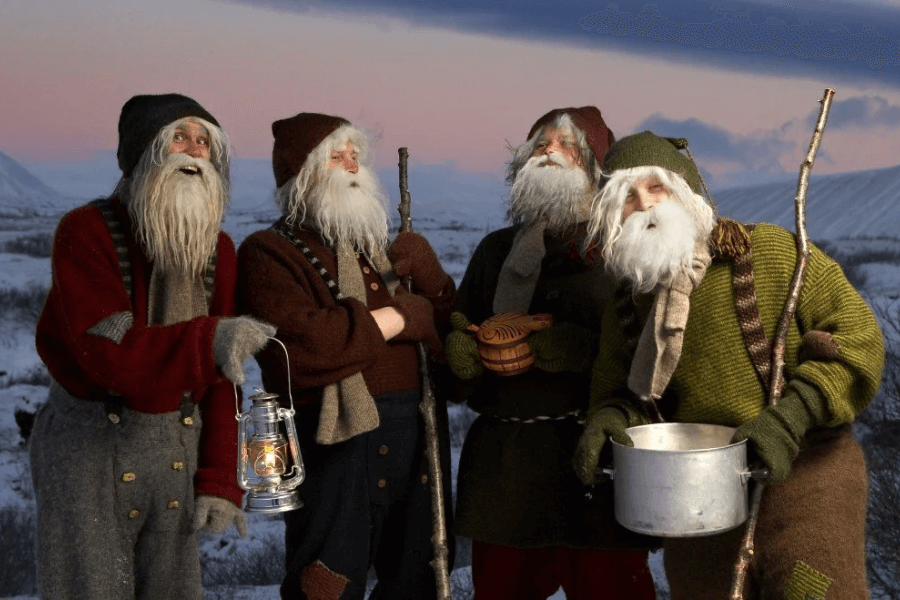
In Iceland, 13 Yule Lads visit children in the days leading up to Christmas. Each night, kids leave a shoe by the window, hoping for small gifts or treats. Naughty children, however, might find a rotten potato instead. It’s a fun and unique holiday tradition.
Each of the 13 Yule Lads has a distinct personality and name, such as Spoon-Licker or Door-Slammer. They are known for their playful and mischievous behavior, adding an element of excitement and anticipation for children during the holiday season.
The Yule Lads’ visits begin on December 12th, with one lad arriving each night until Christmas Eve. This tradition not only brings joy to Icelandic children but also highlights the rich folklore and cultural heritage of Iceland, making the holiday season even more special.
Mari Lwyd
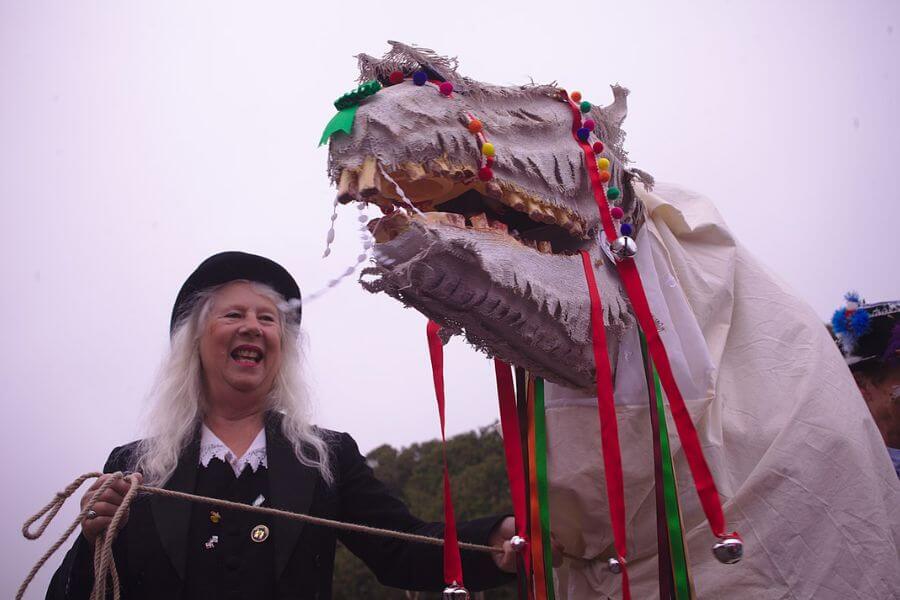
In Wales, the Mari Lwyd is a unique holiday tradition where a horse’s skull is mounted on a pole and decorated. This figure is then paraded around town, singing and engaging in playful rhyming contests with households.
The Mari Lwyd procession is a notable part of Welsh culture. The tradition often involves a group of people, including the person carrying the Mari Lwyd, who visit homes and pubs to perform songs and engage in witty exchanges.
This tradition, typically celebrated around Christmas and New Year, brings communities together through music and laughter. The Mari Lwyd not only entertains but also preserves an important piece of Welsh folklore and holiday traditions.
Giant Lantern Festival
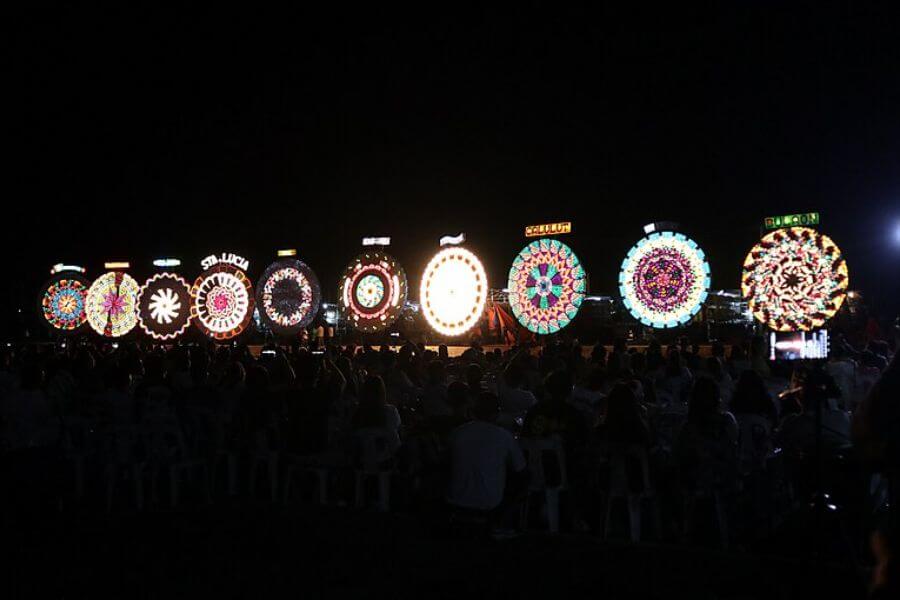
Every December, San Fernando transforms into a glowing wonderland with its Giant Lantern Festival. This spectacular event features massive lanterns, each intricately designed and brightly lit, creating a mesmerizing display that attracts visitors from around the world.
The festival is a celebration of creativity and craftsmanship. Locals spend months preparing their lanterns, using a combination of traditional techniques and modern technology. The result is a stunning array of lights that beautifully illuminates the night sky.
Aside from the impressive lanterns, the festival also includes various cultural performances and activities. Visitors can enjoy traditional Filipino music and dance, taste local delicacies, and immerse themselves in the rich holiday traditions of the Philippines.
Tió de Nadal
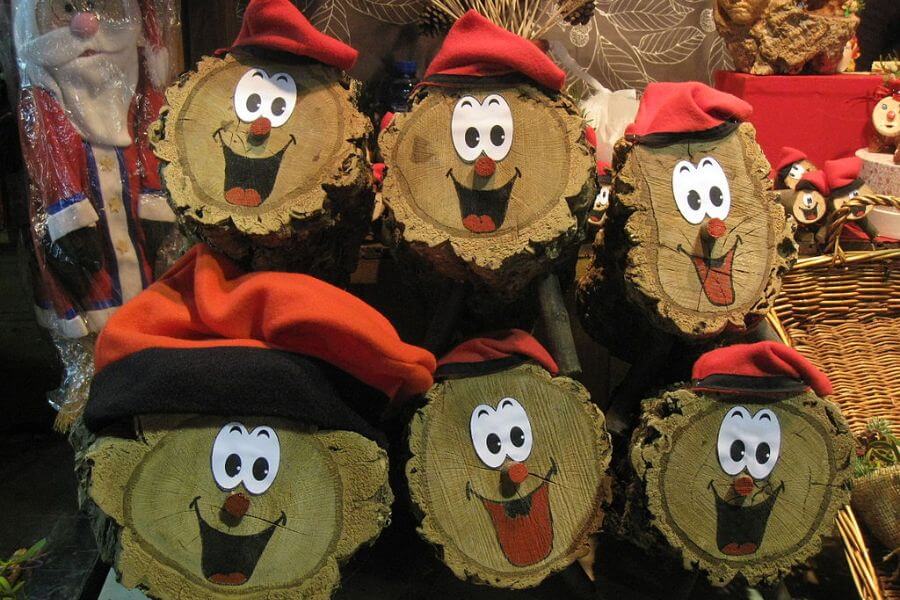
In Catalonia, Spain, one of the most delightful holiday traditions is Tió de Nadal, also known as ‘Caga Tió.’ This friendly log is brought into homes at the start of December, and children feed it daily with treats like nuts and fruit.
As Christmas Eve approaches, the excitement builds as the children gather around the Tió de Nadal. They sing traditional songs and hit the log with sticks, urging it to ‘poop’ out presents and candies. It’s a fun and unique way to celebrate the holiday season.
The tradition of Tió de Nadal highlights the creative and playful spirit of Catalan culture. This quirky custom brings families together, creating memories and laughter. It’s a must-see for travelers looking to experience local holiday traditions in Spain.
Burning of the Devil
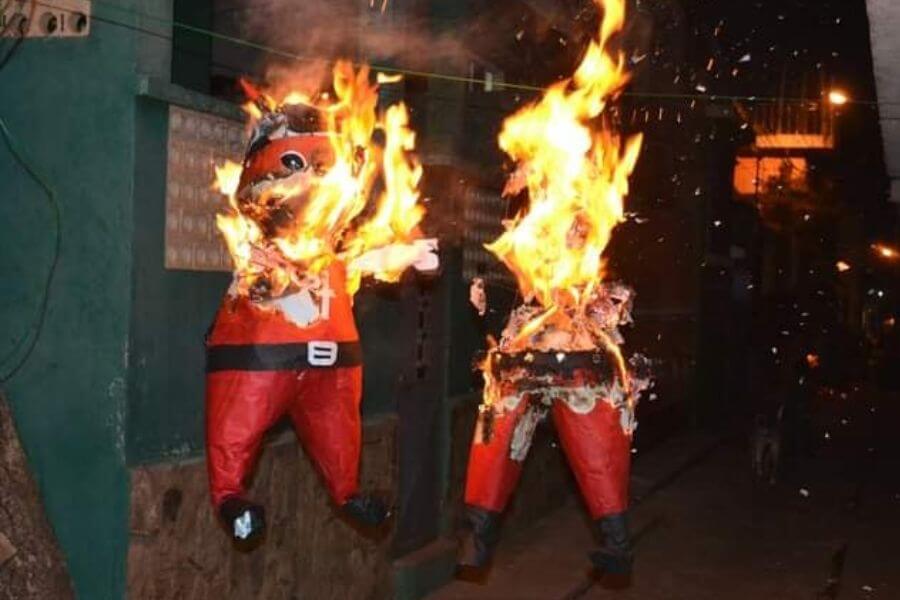
Every year on December 7th, people in Guatemala celebrate the ‘Burning of the Devil.’ They burn effigies to get rid of bad spirits and make way for good luck. This tradition brings communities together and marks the start of the Christmas season.
The ‘Burning of the Devil’ is more than just a fire; it includes parades, music, and food. People gather in the streets to enjoy the festivities, making it a fun and lively event for everyone. It’s a unique way to experience local culture.
For travelers, this tradition offers a chance to see something truly special. The ‘Burning of the Devil’ is a mix of history and modern celebration, giving visitors a deeper understanding of Guatemalan customs. It’s an unforgettable part of holiday traditions in the region.
Hiding Brooms
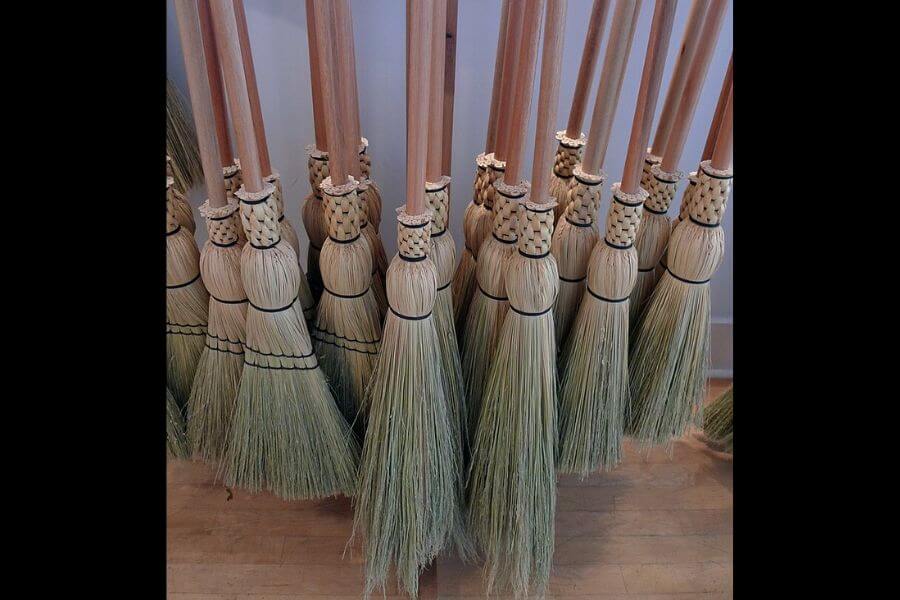
In Norway, people hide their brooms on Christmas Eve to prevent witches from borrowing them for a midnight ride. This quirky tradition is believed to keep evil spirits away during the holiday season.
The practice of hiding brooms dates back centuries in Norwegian folklore. It reflects a mix of superstition and practical measures, as people believed that witches and evil spirits roamed freely on Christmas Eve.
While it may seem unusual, this tradition adds to the rich tapestry of holiday customs in Norway. It offers a glimpse into how people historically tried to protect their homes and families from malevolent forces.
Spider Web Tree
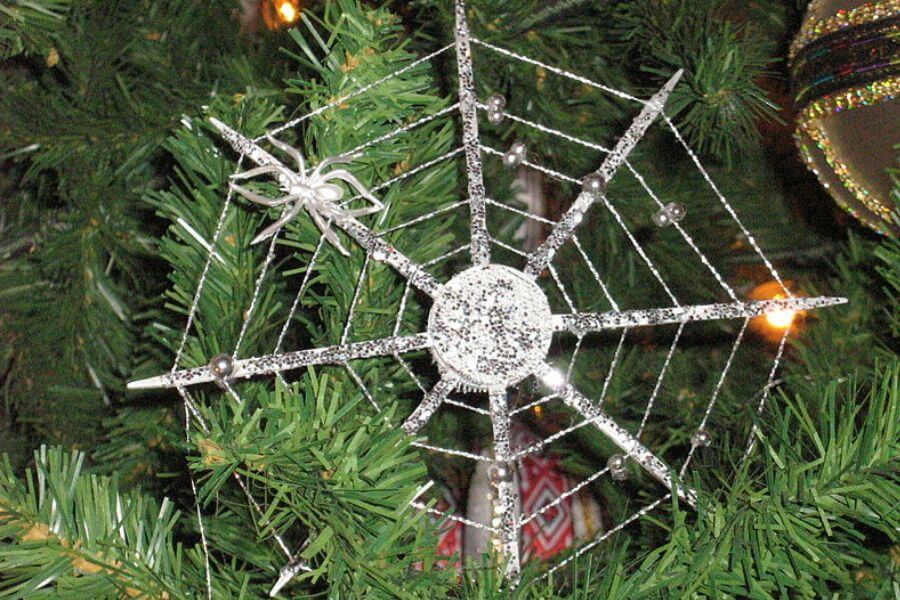
In Ukraine, it’s a tradition to decorate Christmas trees with artificial spider webs. This unique custom is believed to bring good luck and prosperity to homes during the holiday season.
The tradition of spider web Christmas trees in Ukraine comes from a local legend. The story tells of a poor widow whose Christmas tree was magically covered in spider webs that turned into silver and gold by morning.
Travelers visiting Ukraine during the holidays will find these spider web decorations fascinating. They symbolize hope and fortune, making the holiday experience even more special and memorable.
Cavalcade of Magi
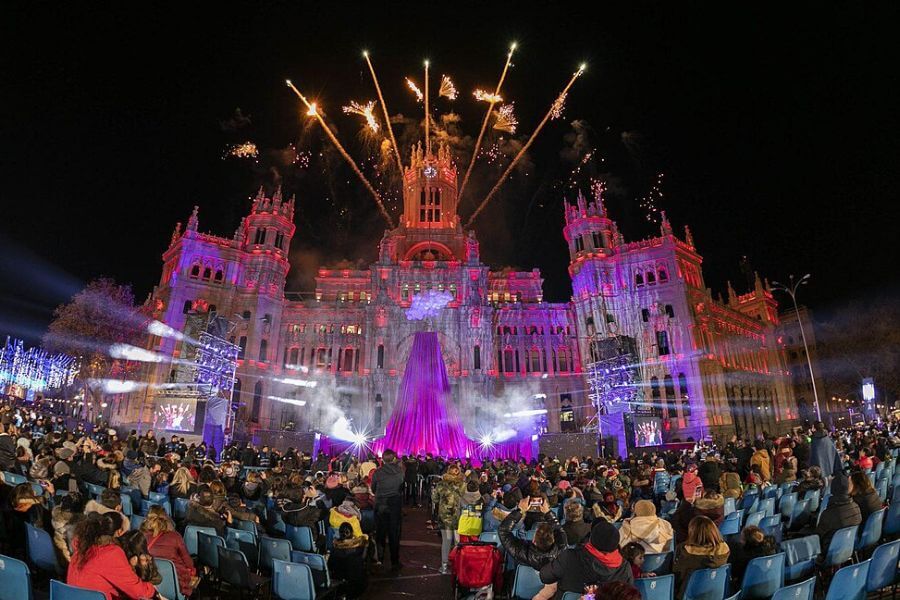
The Cavalcade of Magi is an exciting parade held on January 5th in Spain, where the Three Wise Men arrive with grand fanfare. The event features colorful floats, lively music, and heaps of candy tossed to eager children lining the streets.
This festive tradition has a deep-rooted history in Spanish culture, symbolizing the journey of the Three Wise Men to Bethlehem. Families gather to witness the spectacle, creating a sense of community and joy as they celebrate together.
In many towns, the Three Wise Men also visit hospitals and care homes, bringing gifts and spreading cheer to those who can’t attend the parade. This thoughtful gesture highlights the inclusive spirit and generosity of the holiday traditions.
Day of the Little Candles

The Day of the Little Candles, celebrated on December 7th, marks the start of Colombia’s festive season. Streets and homes across the country are adorned with thousands of candles and lanterns, creating a magical and welcoming atmosphere that’s perfect for travelers to enjoy.
This holiday tradition involves families and friends coming together to light candles and place them outside their homes. It’s a communal activity that fosters a sense of togetherness and community spirit, making it a wonderful experience for visitors to witness and participate in.
In addition to lighting candles, many Colombians also decorate their homes with colorful paper lanterns. These decorations add to the festive ambiance and are often accompanied by music, food, and fireworks, offering travelers an immersive and joyful holiday experience.
Jólabókaflóð
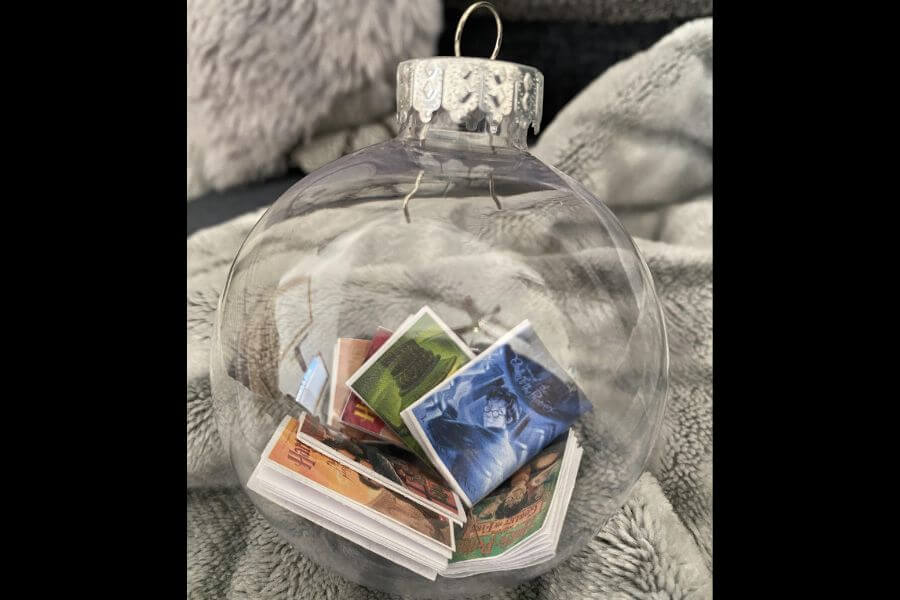
In Iceland, the tradition of Jólabókaflóð involves giving books as gifts on Christmas Eve. This unique custom encourages people to spend the evening reading and enjoying hot chocolate, creating a cozy and heartwarming holiday experience.
This tradition dates back to World War II when paper was one of the few items not rationed. Since then, Icelanders have embraced the practice, making books a central part of their holiday celebrations and fostering a strong reading culture.
Many Icelandic publishers release new books in the months leading up to Christmas, contributing to the holiday excitement. This ‘flood’ of books ensures that everyone has something new and interesting to read during the festive season, adding to the joy of the holidays.
Christmas Witch

In Italy, La Befana is a beloved figure who brings joy to children on January 6th, the Epiphany. Riding her broomstick, she delivers gifts and sweets, making the holiday extra special for kids.
This unique tradition has its roots in Italian folklore, where La Befana is seen as a kind-hearted witch. She is said to visit homes, filling stockings with treats for well-behaved children, much like Santa Claus.
Travelers visiting Italy during the Epiphany can experience this charming custom firsthand. Celebrations often include parades, festivals, and reenactments of La Befana’s gift-giving journey, offering a delightful glimpse into local holiday traditions.
Floating Lanterns

Yi Peng festival in Thailand is a magical event where thousands of lanterns light up the night sky. This tradition symbolizes letting go of worries and embracing new beginnings, making it a perfect time for reflection and renewal.
During the Yi Peng festival, locals and visitors gather to release floating lanterns together. The sight of countless lanterns drifting upwards creates a sense of unity and shared hope, making it a memorable experience for everyone involved.
In addition to releasing lanterns, the Yi Peng festival includes parades, traditional dances, and cultural performances. These events offer a deeper understanding of Thai culture and provide a vibrant backdrop to the serene lantern release, enriching the overall experience.
Feast of Saint Nicholas
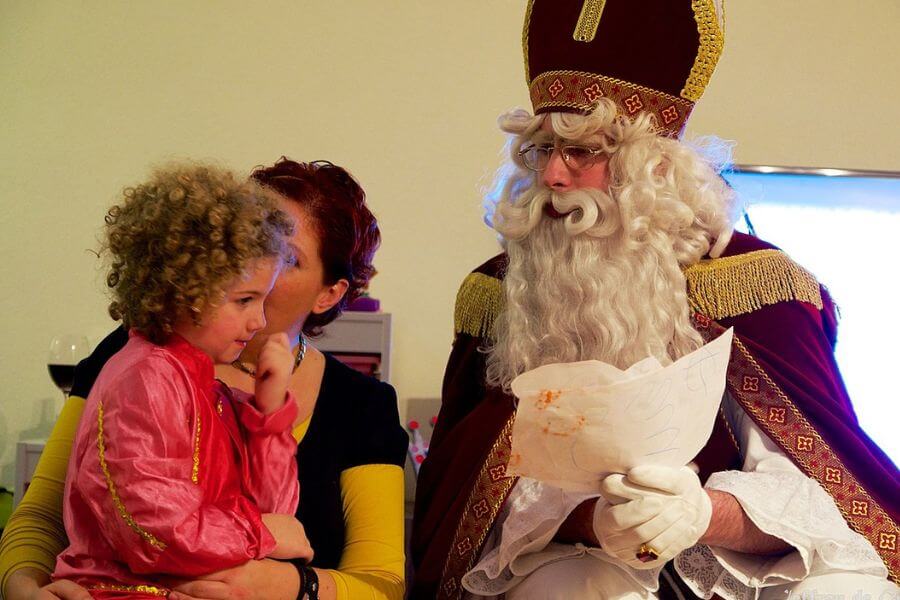
In the Netherlands, kids get their gifts on December 5th, known as Saint Nicholas’ Eve. It’s a joyful time when Sinterklaas arrives on a steamboat with his helpers to hand out presents, creating a magical holiday tradition.
The celebration includes fun songs and tasty treats like chocolate letters and marzipan figures. Children often leave their shoes out with carrots for Sinterklaas’ horse, hoping to find small gifts inside the next morning.
This festive event not only brings joy to the little ones but also unites families as they gather to celebrate together. It’s a cherished tradition that highlights the warmth and togetherness of the holiday season in the Netherlands.
Tossing Lumpia
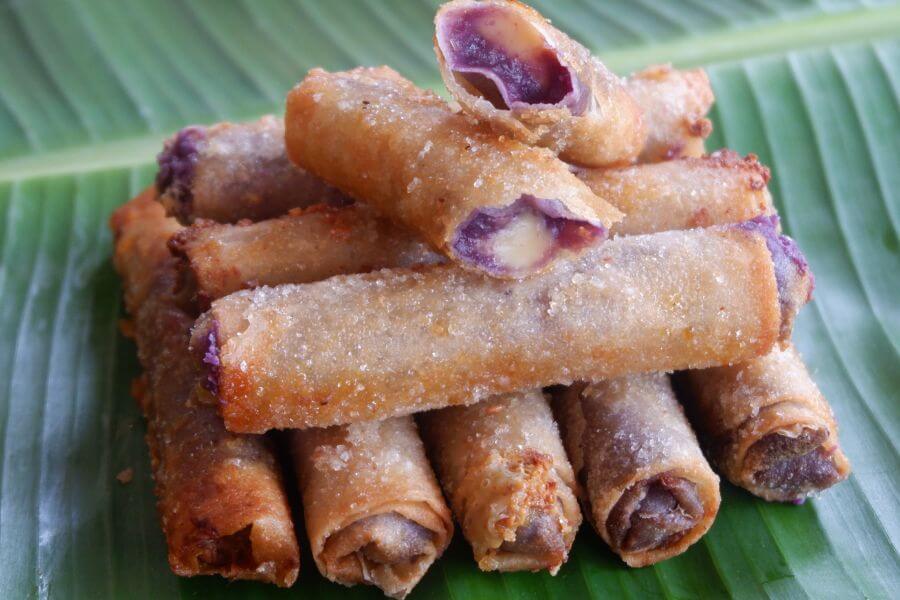
In the Philippines, families celebrate Christmas Eve with the fun ‘Lumpia Toss’ game. This involves tossing spring rolls, known as lumpia, into each other’s mouths. It’s a delightful way to bring good luck and laughter to the holiday season.
Lumpia, a popular Filipino snack, becomes the centerpiece of this holiday game. Family members take turns trying to catch these tasty treats with their mouths, adding an element of playful competition to the festivities. It’s a tradition that brings everyone together.
The ‘Lumpia Toss’ is more than just a game; it’s a way to create lasting memories. As laughter fills the room and everyone enjoys the challenge, the event fosters a sense of unity and joy, making the holiday season even more special.
Posadas

Mexico’s Las Posadas is a nine-day event where people recreate Mary and Joseph’s search for a place to stay. Folks walk through the streets, stop at homes, and sing traditional songs. This celebration happens every year from December 16th to 24th.
Each evening during Las Posadas, participants, often dressed as Mary and Joseph, knock on doors asking for shelter. This reenactment continues until they are welcomed inside for a festive gathering. The tradition brings communities together in a joyful atmosphere.
The final night of Las Posadas is marked by a big feast and lively parties. Children often break piñatas filled with treats, adding to the excitement. This celebration is a cherished part of Mexico’s holiday traditions, offering a unique glimpse into the local culture.
Día de los Reyes
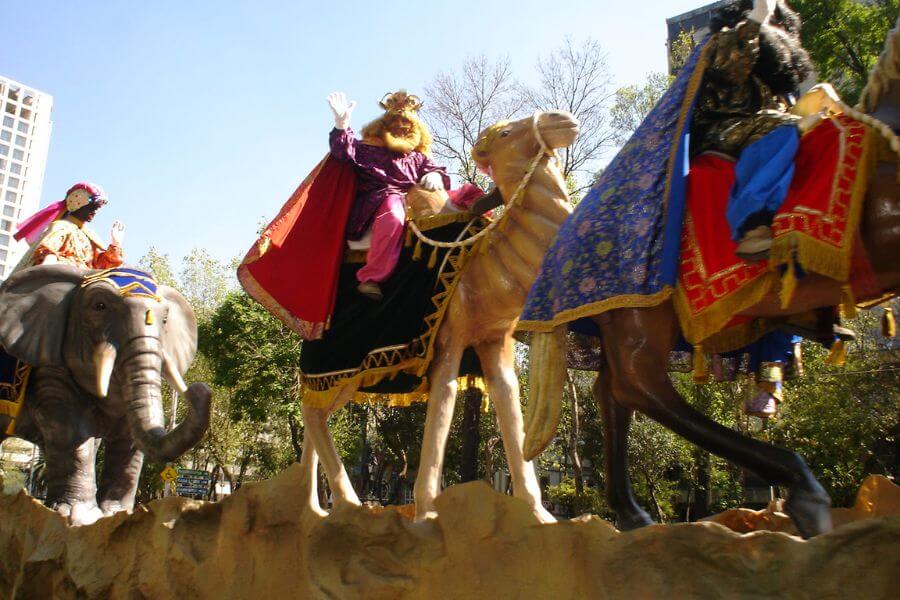
In Spain, Three Kings’ Day is a festive celebration on January 6th. The day is marked with lively parades that feature colorful floats and characters, creating a magical atmosphere for everyone to enjoy.
One of the highlights of Three Kings’ Day is the Rosca de Reyes cake. This sweet treat has a hidden figurine inside, and whoever finds it is believed to have good luck for the year. It’s a fun and tasty tradition.
The parades and the Rosca de Reyes cake together make Three Kings’ Day a unique holiday. These traditions offer travelers a chance to experience Spain’s rich culture and join in the joyous celebrations with locals.
Takanakuy Festival

The Takanakuy Festival, held on December 25th in Peru, is a unique way for locals to resolve conflicts. Participants engage in fistfights to settle disputes, making it a fascinating tradition that blends conflict resolution with celebration.
After the fights, the community comes together for a feast. The shared meal symbolizes reconciliation and unity, allowing everyone to start the new year on good terms. This aspect of the festival highlights the importance of community bonds.
The festival also includes dancing and music, which are integral to the celebration. These activities create a festive atmosphere, helping participants and spectators alike to forget past grievances and look forward to a harmonious new year.
Christmas Pickle
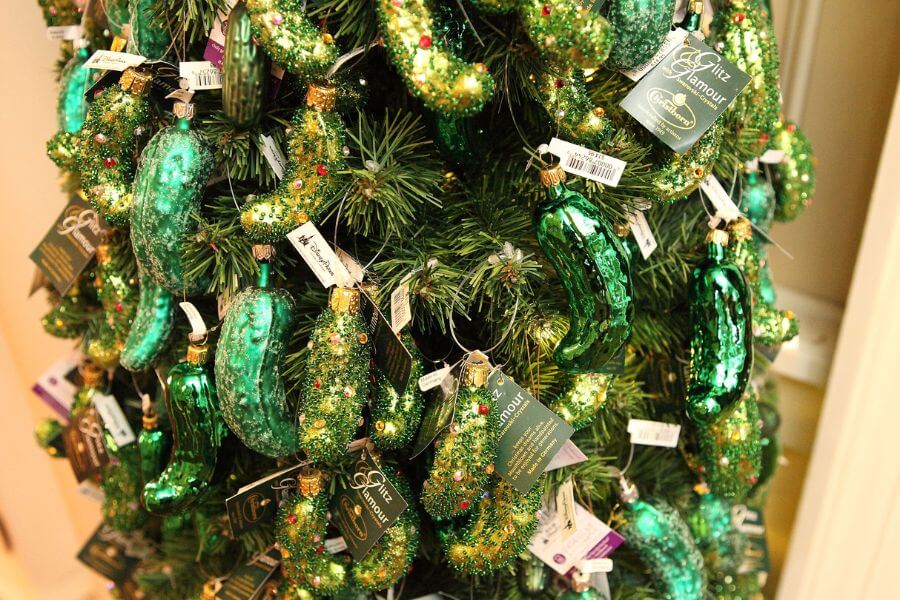
In Germany, hiding a pickle ornament in the Christmas tree is a fun tradition. The first child to find it on Christmas morning gets an extra gift or good luck for the year. This makes the holiday even more exciting for kids.
The Christmas pickle tradition in Germany adds a playful twist to holiday celebrations. Families gather around the tree, eagerly searching for the hidden ornament. This custom not only brings joy but also strengthens family bonds during the festive season.
While the origin of the Christmas pickle tradition is unclear, it has become a beloved part of German holiday customs. Some believe it started as a way to encourage children to look more closely at the beautifully decorated tree, adding an element of surprise to Christmas morning.
Caga Tió
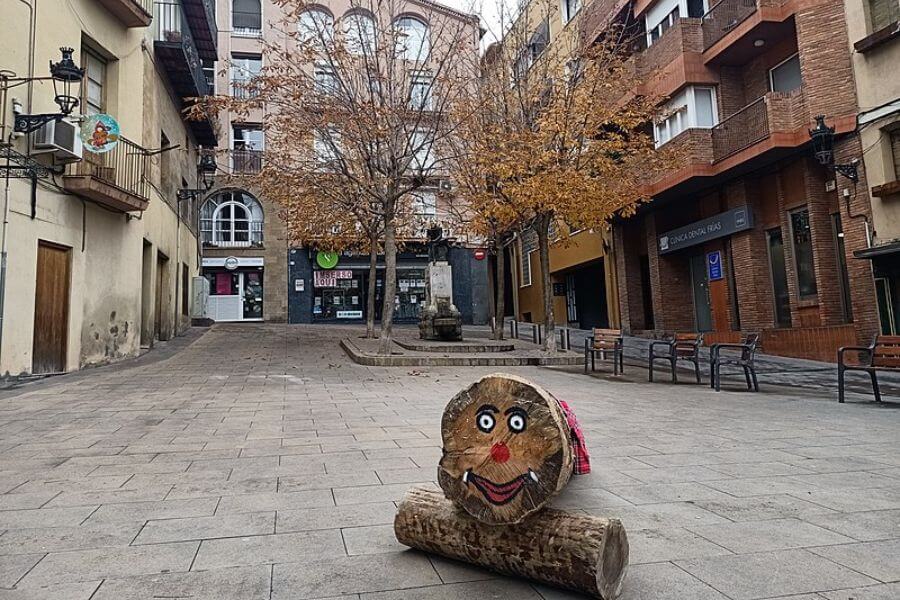
Caga Tió is a unique Christmas tradition in Catalonia, Spain. Kids feed and take care of this smiling log throughout December. They cover it with a blanket to keep it warm, preparing it for the magical night.
On Christmas Eve, children gather around Caga Tió and sing special songs while tapping it with sticks. To their delight, the log ‘poops’ out small gifts and sweets, making the night filled with joy and surprise.
The tradition of Caga Tió dates back to ancient times and represents the spirit of giving and community. This charming custom adds a special touch to the holiday season, making it memorable for both locals and visitors.
Kentucky Fried Christmas

In Japan, having KFC for Christmas dinner is a popular tradition that began in the 1970s. A clever marketing campaign by the fast-food chain made fried chicken a must-have for the holiday, and now it’s a beloved custom in the country.
Japanese families often place their orders weeks in advance to ensure they get their Christmas KFC meals. The tradition includes special holiday buckets that come with chicken, sides, and even a cake, making it a festive feast for everyone.
This unique holiday tradition has become so ingrained in Japanese culture that KFC restaurants see a massive spike in sales every December. It’s a perfect example of how a simple marketing idea can turn into a nationwide custom.
Christmas Sauna
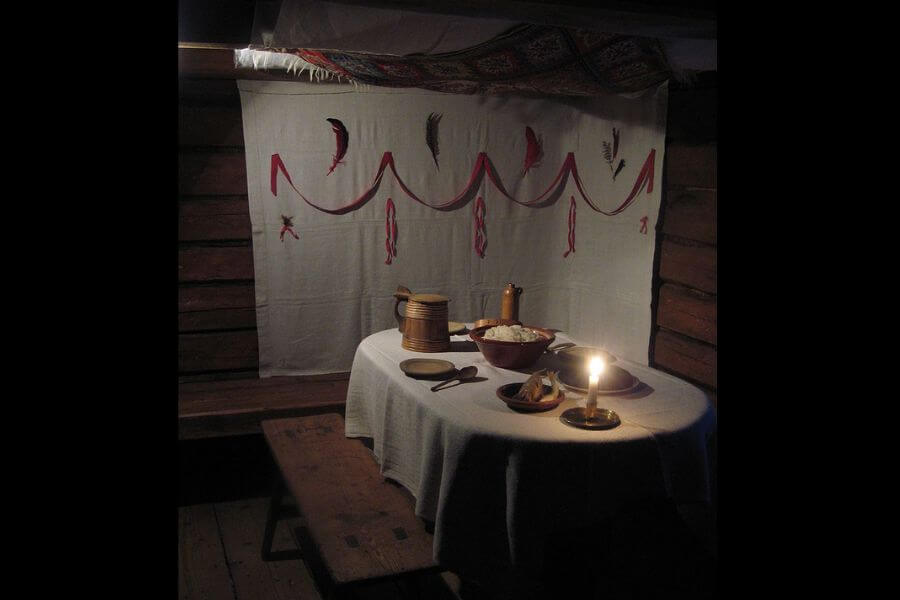
In Finland, it’s common to visit a sauna on Christmas Eve. This tradition helps people relax and clear their minds before the holiday festivities begin. It’s a way to start the celebrations feeling refreshed and peaceful.
Families in Finland often take turns using the sauna on Christmas Eve. It’s a time for quiet reflection and togetherness, creating memories that last a lifetime. The warmth of the sauna contrasts with the cold winter outside, adding to the cozy holiday atmosphere.
Some Finnish saunas are even decorated for Christmas, with candles and festive ornaments. This adds a special touch to the experience, making it even more memorable. The sauna becomes a place of warmth and light during the darkest time of the year.
Christmas Eve Carp

In Slovakia, it’s common to keep a live carp in the bathtub for a few days before Christmas Eve dinner. This tradition is believed to ensure the fish is fresh and also serves as a unique holiday experience for the family.
The carp is usually bought from local markets and kept in the bathtub to cleanse it of mud. This practice, while unusual, is a cherished part of Slovak holiday traditions, making the meal even more special and memorable.
On Christmas Eve, the carp is prepared in various traditional ways, often fried or baked. This special dish is a highlight of the holiday feast, bringing families together to enjoy a meal that has been an important part of their culture for generations.
Christmas Witch

In Italy, La Befana is a kind witch who brings gifts to children on January 6th, the Epiphany. She travels on a broomstick, spreading joy in her magical way.
La Befana’s tradition is a cherished part of Italian holiday customs. Children leave stockings out for her to fill with sweets and small gifts, much like Santa Claus in other cultures.
The story of La Befana adds a unique charm to Italy’s holiday traditions. According to legend, she missed a chance to visit baby Jesus with the Wise Men and now brings gifts to children every year in his honor.
Christmas Crackers
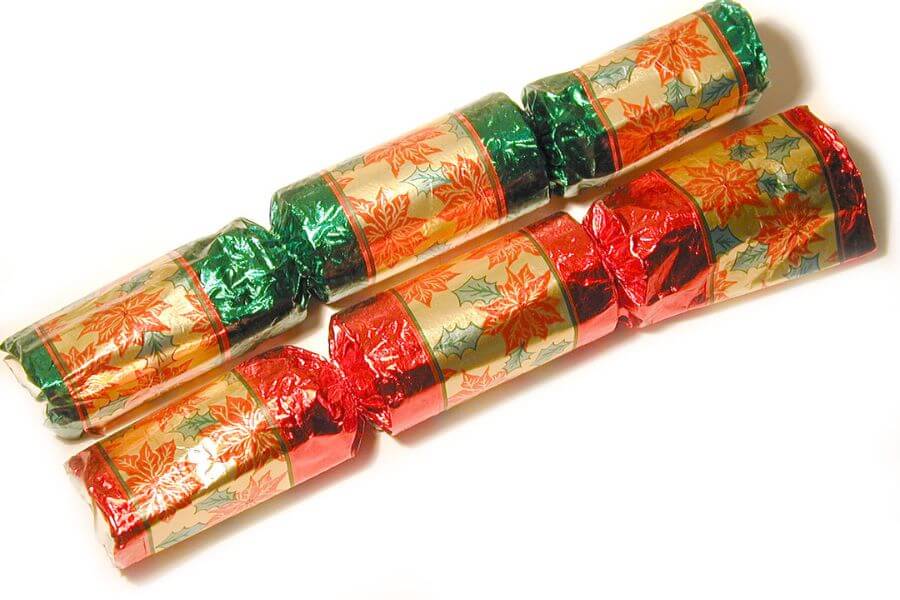
Christmas crackers are a staple in UK holiday traditions. These colorful paper tubes are pulled apart with a pop, revealing small gifts, jokes, and paper crowns inside. It’s a fun way to add excitement to festive gatherings.
The tradition of Christmas crackers dates back to the 19th century. Invented by Tom Smith, a London confectioner, they were inspired by French bonbons. Today, pulling crackers is a highlight of Christmas dinners, with everyone eager to see what’s inside.
Each Christmas cracker contains a paper crown, a small toy or gift, and a joke or riddle. These items add a playful element to holiday celebrations, and the jokes, though often cheesy, are a beloved part of the experience.
Simbang Gabi

Simbang Gabi, or Night Mass, is a cherished tradition in the Philippines. People attend nine early morning masses leading up to Christmas, making it a special time for prayer and reflection. It’s a beautiful way to prepare for the holiday season.
During Simbang Gabi, communities come together in a festive spirit. Churches are often beautifully decorated, and there’s a strong sense of togetherness. This tradition not only strengthens faith but also brings people closer, making it a unique holiday experience.
Food plays a big part in Simbang Gabi. After the early morning mass, you can find local treats like bibingka (rice cakes) and puto bumbong (purple rice cakes). These delicious snacks add to the festive atmosphere and are a delightful way to start the day.
Christmas Boat
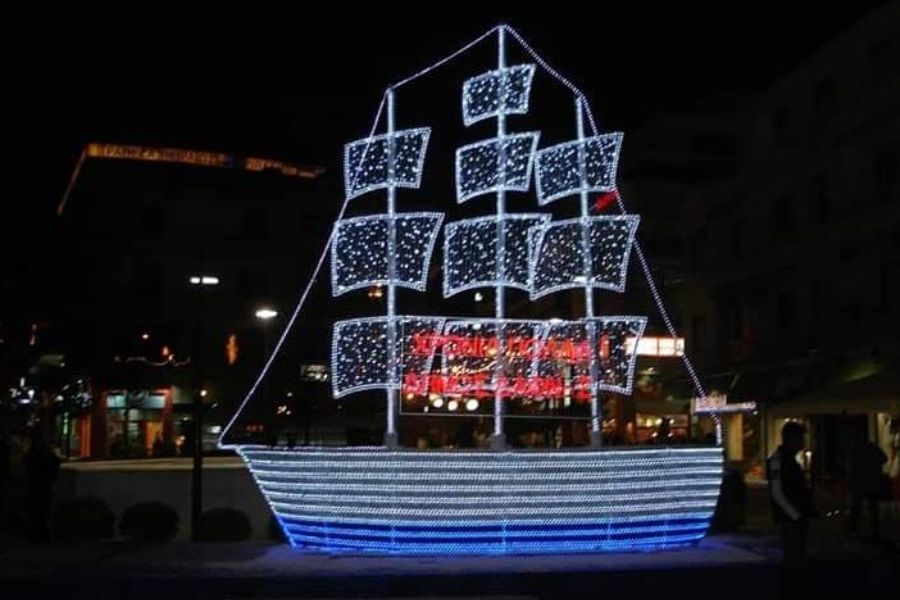
In Greece, instead of a Christmas tree, many people decorate a boat. This tradition honors the country’s rich maritime history and the importance of the sea in Greek culture.
Decorating boats during the holiday season is also a way to pay tribute to Greek sailors and their families, who often spend long periods away from home. It’s a symbol of hope for their safe return.
This unique holiday tradition can be seen in many coastal towns and cities in Greece, where beautifully adorned boats light up the harbors, creating a festive and welcoming atmosphere for both locals and visitors.
Christmas Lottery

Spain’s Christmas Lottery, known as ‘El Gordo,’ is the world’s largest lottery by total prize payout. The draw on December 22nd creates huge excitement as people eagerly watch the televised event, hoping their ticket will bring them fortune.
El Gordo isn’t just about winning money; it’s a cherished holiday tradition. Families and friends often buy tickets together and share the winnings, making it a collective experience. This practice adds to the festive spirit and brings communities closer.
Even those who don’t win a big prize find joy in the event. Many celebrate with traditional Spanish treats and gatherings, making the lottery draw a key part of their December festivities. It’s a unique blend of anticipation and holiday joy.
Christmas Market
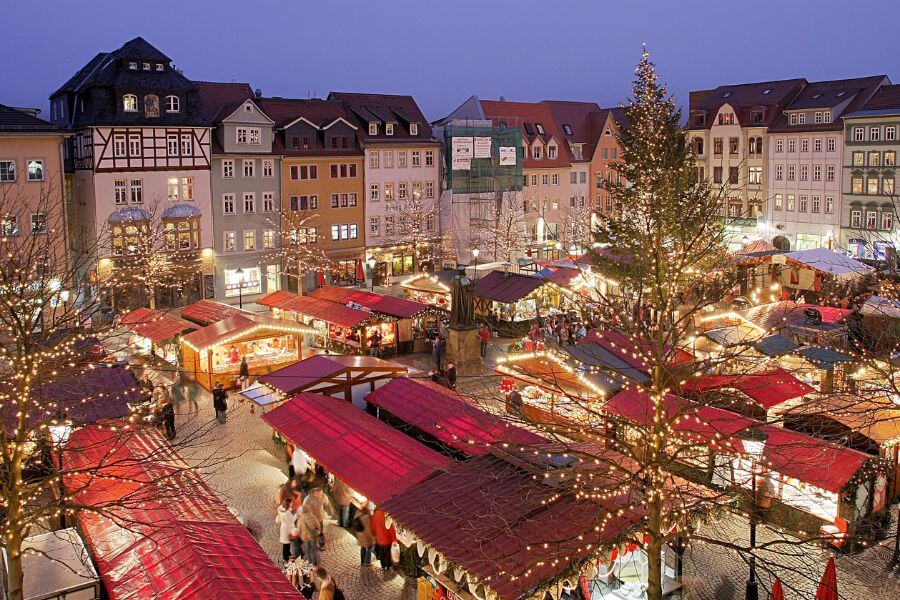
Germany’s Christmas markets are famous for their joyful vibe, with stalls selling crafts, food, and warm mulled wine. These markets are a key part of holiday traditions and are a must-visit for anyone during the festive season.
Each market has its own charm, often featuring local crafts and specialties. Visitors can enjoy handmade ornaments, wooden toys, and delicious treats like gingerbread and sausages, making it a perfect place to experience local holiday traditions.
The festive lights and decorations add to the magical atmosphere, creating a winter wonderland. Many markets also offer entertainment like carol singing and ice skating, ensuring that there is something for everyone to enjoy.
Christmas Eve Sauna

In Estonia, visiting a sauna on Christmas Eve is a deep-rooted tradition. Families come together to relax and cleanse both body and mind before the holiday celebrations. This practice offers a moment of calm and unity before the festivities begin.
The Christmas Eve sauna tradition in Estonia is not just about physical cleanliness. It is also a spiritual cleanse, believed to wash away the troubles and stresses of the past year. This ritual helps people start the holiday season with a fresh and peaceful mind.
For many Estonians, the sauna is a place of bonding and reflection. It provides an opportunity for families to connect and share stories. This tradition highlights the importance of family and togetherness, making the holiday season even more meaningful.
Christmas Pudding

Christmas pudding is a traditional dessert enjoyed in the UK during the holiday season. Made weeks in advance, it features a mix of dried fruits, spices, and suet, and is often served with brandy sauce or custard.
A charming custom associated with Christmas pudding is the hiding of a coin within the dessert. The person who finds the coin in their serving is said to have good luck for the coming year, adding a fun and festive element to the meal.
Many families have their own cherished recipes for Christmas pudding, passed down through generations. This rich and flavorful dessert is often made as a group activity, bringing families together in the spirit of the holidays.
Christmas Spider
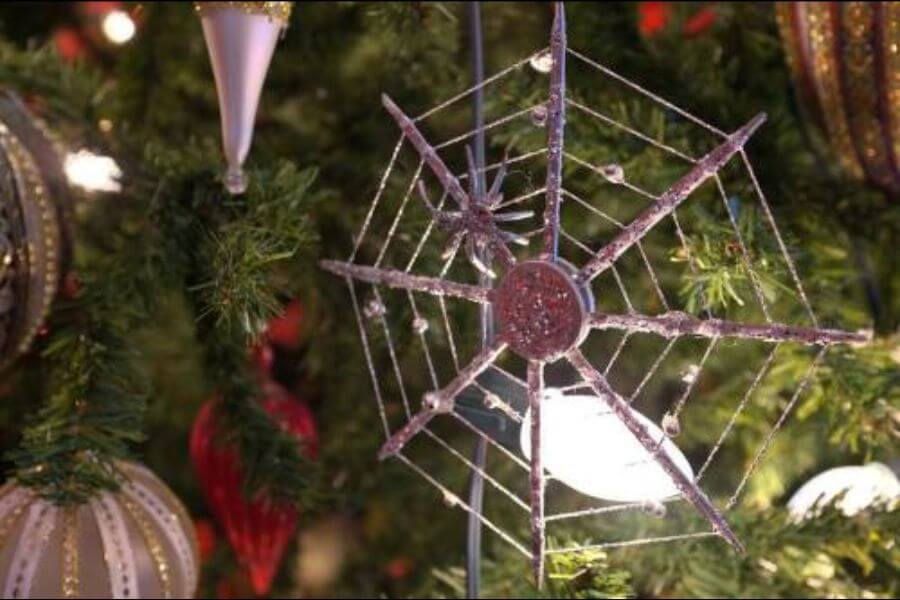
In Poland, it’s believed that finding a spider or web on your Christmas tree brings good luck. This tradition comes from an old folk tale where a spider wove a web to decorate a poor family’s tree, turning it into silver and gold threads.
The tale behind the Christmas spider is said to symbolize hope and prosperity. Families in Poland often include spider ornaments on their trees to remember this tradition and to invite good fortune into their homes during the holiday season.
This charming custom is unique to Poland and adds a special touch to holiday traditions. Travelers experiencing Christmas in Poland may notice spider-shaped decorations on trees, reflecting the rich folklore and the cultural importance of this delightful tradition.
Shoe Toss

In the Czech Republic, it’s a fun Christmas tradition for single women to toss a shoe over their shoulder. If the shoe lands with the toe pointing towards the door, it means they’ll get married soon.
This unique custom allows single women to see what the future holds for their love lives. It’s an exciting way to add a bit of mystery and joy to the holiday season.
Holiday traditions like the shoe toss remind us how different cultures celebrate and find joy in unique ways. It’s a special moment that brings hope and excitement to those looking for love.
Christmas Wreaths
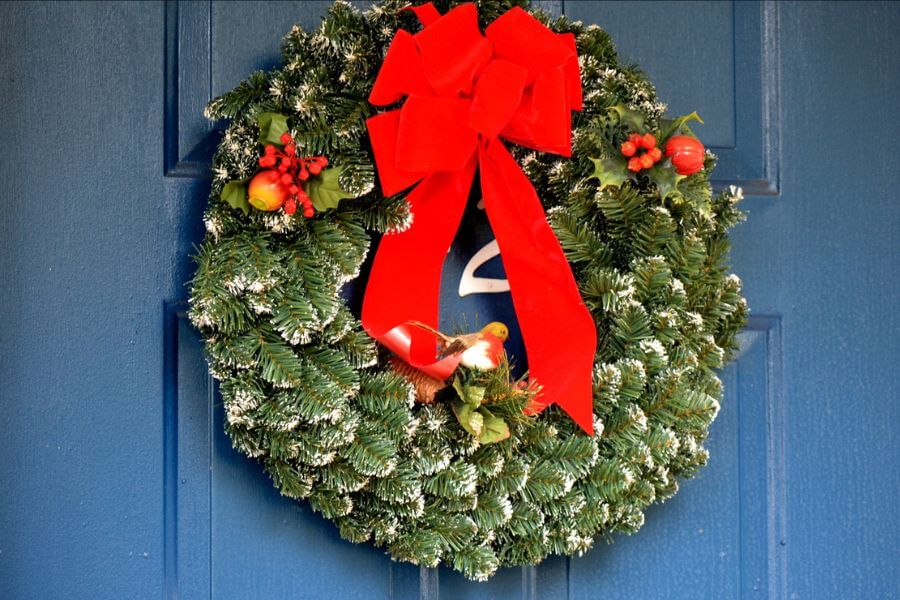
In Greece, many people hang Christmas wreaths made of basil in their homes. These wreaths are believed to bring good luck and keep evil spirits away, making them a cherished part of holiday traditions.
The custom of using basil for Christmas wreaths in Greece is deeply rooted in tradition. Basil is a symbol of love and protection, which is why it is chosen to create these festive decorations.
Travelers visiting Greece during the holiday season can witness the unique charm of basil wreaths. These wreaths are often beautifully crafted and add a special touch to the festive atmosphere, reflecting the rich cultural heritage of the country.
Christmas Eve Porridge
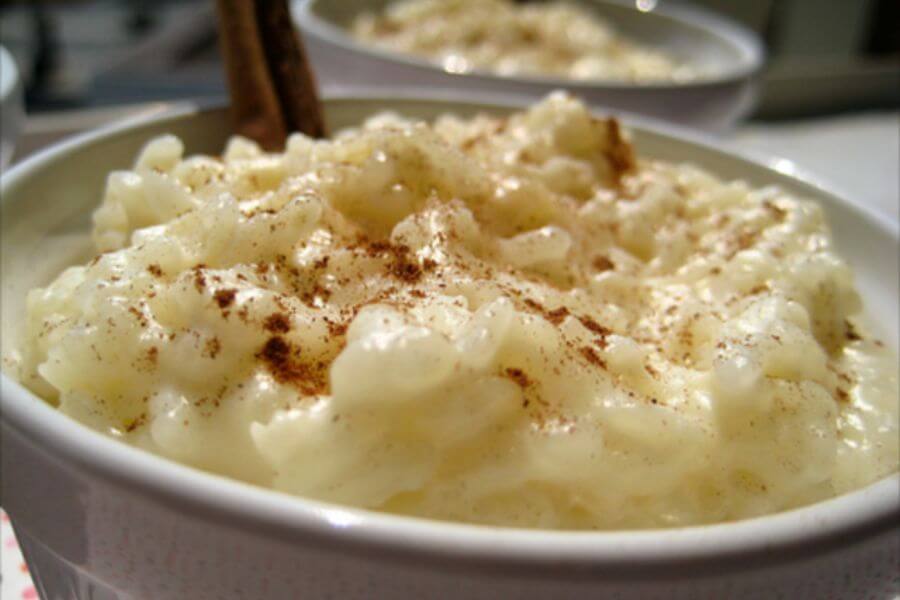
In Finland, Christmas Eve is made special with a warm bowl of rice porridge. This tradition is cherished by families as they gather to enjoy this simple yet comforting dish together.
A fun part of this Finnish tradition is hiding an almond in the porridge. Whoever finds the almond is believed to have good luck for the coming year, adding an element of surprise and joy to the meal.
This custom not only brings a festive spirit but also strengthens family bonds. Sharing this traditional dish reminds everyone of the importance of togetherness and the joy of holiday traditions.
Christmas Lanterns
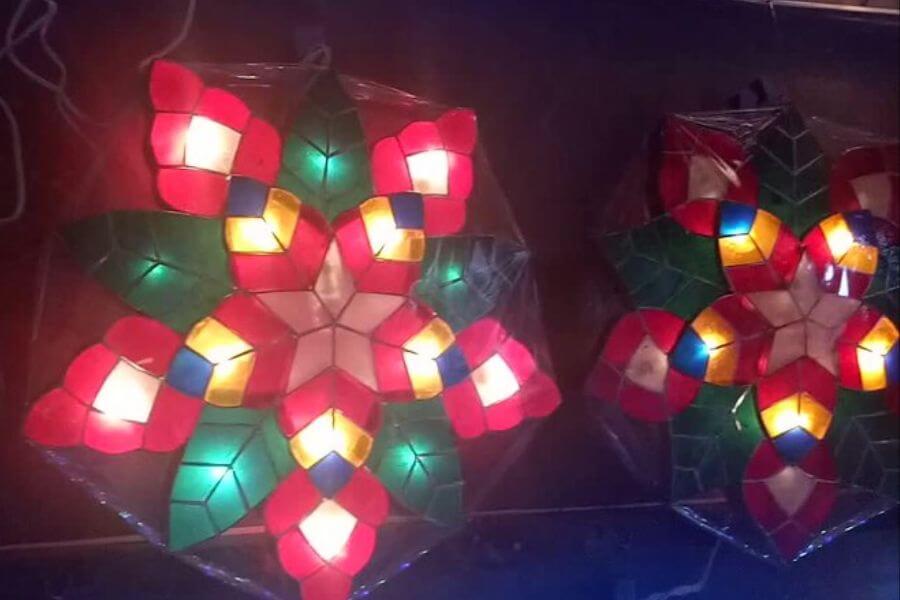
In the Philippines, parols are an important part of holiday traditions. These star-shaped lanterns represent the Star of Bethlehem and can be seen decorating homes and streets during Christmas time, adding a festive glow to the surroundings.
Making a parol is a fun and creative activity for many families. These lanterns are often crafted from simple materials like bamboo and paper and decorated with vibrant colors, making each parol unique and special.
Parols are more than just decorations; they symbolize hope and light during the holiday season. Joining local festivals and parol-making contests can be a great way to experience and learn about Filipino culture and its rich holiday traditions.
Christmas Sausages

In South Africa, a popular tradition during Christmas is to enjoy boerewors, which translates to ‘farmers’ sausage.’ This flavorful sausage is typically grilled and shared among family and friends, making it a central part of holiday gatherings.
Boerewors is made from a mix of beef, pork, and spices, giving it a unique taste that is loved by many. The sausage is often cooked on a braai, a South African barbecue, which adds a smoky flavor to the meat.
Sharing boerewors during Christmas is more than just about the food; it’s also about bringing people together. This tradition highlights the importance of family and community, which are key aspects of holiday traditions in South Africa.
Christmas Log
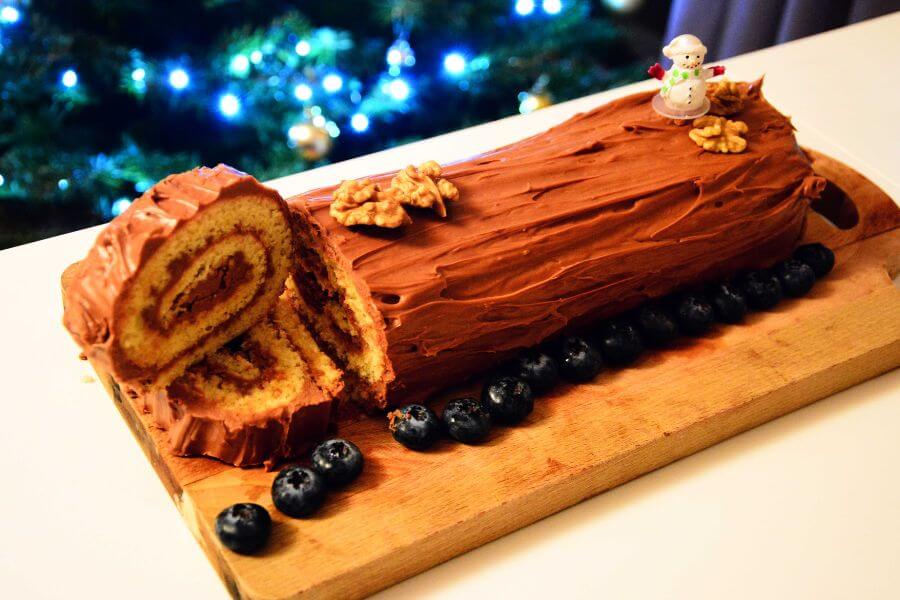
In France, the Bûche de Noël (Yule log cake) is a favorite holiday dessert. It’s a rolled sponge cake designed to look like a log, often decorated with icing and meringue mushrooms.
The Yule log cake tradition dates back to the 19th century in France, where families would burn a real wooden log in their hearths. The cake version became a way to keep the tradition alive as fireplaces became less common.
Many French bakeries create elaborate Bûche de Noël cakes, featuring various flavors like chocolate, coffee, and chestnut. These cakes are not only delicious but also a visual treat, making them a popular choice for holiday feasts.
Christmas Piñata
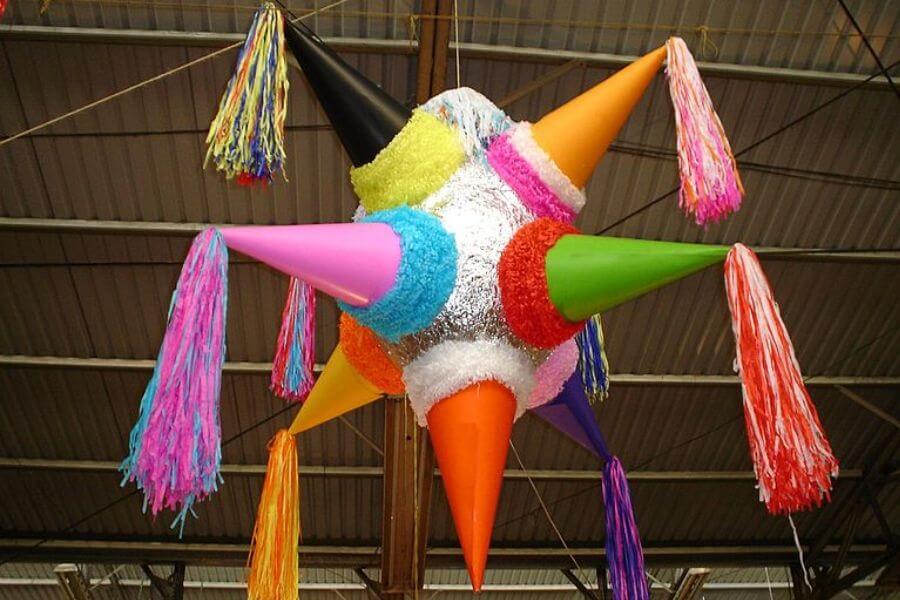
In Mexico, children eagerly anticipate the breaking of a piñata during Posadas. These colorful, star-shaped piñatas are filled with candy and small gifts, making the event a joyous highlight of the holiday season.
The tradition of breaking piñatas during Posadas dates back to the 16th century. Originally, it was a way to teach religious lessons, but over time it has become a fun and festive activity enjoyed by families and communities.
The piñata-breaking event involves blindfolding children and guiding them to hit the piñata with a stick. This activity is not only exciting but also brings families and friends together, creating cherished holiday memories.
Christmas Candles
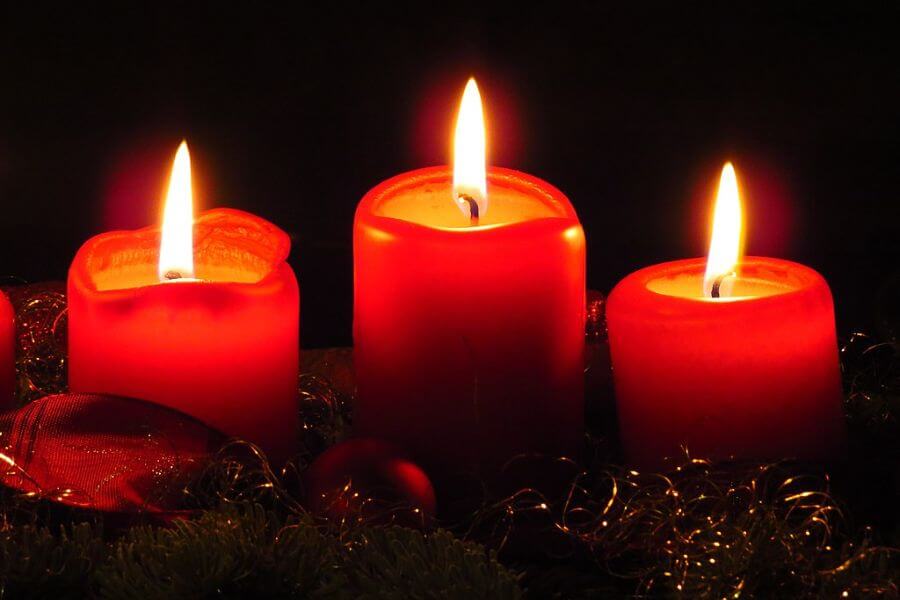
In Ireland, families place a candle in their window on Christmas Eve to welcome Mary and Joseph. This tradition is often started by the youngest child, making it a special family moment.
This tradition of lighting a candle on Christmas Eve is not just symbolic but also a way to create a warm and inviting atmosphere in the home. It represents hope and hospitality during the holiday season.
The candle in the window is a simple yet meaningful practice that has been passed down through generations. It reflects the importance of family and the spirit of giving during Christmas time.
Christmas Carp

In Poland, a unique holiday tradition involves keeping a live carp in the bathtub for a few days before Christmas Eve dinner. This practice ensures the fish is fresh for the meal, a custom that dates back many years.
The carp is a key part of the traditional Christmas Eve dinner, which is often meatless. Families prepare the fish in various ways, such as frying or baking, making it a central dish of the festive holiday meal.
Beyond its culinary role, the carp also holds symbolic meaning. It is said to bring good fortune for the coming year, and some families even keep a scale from the fish in their wallets for luck. This tradition adds an extra layer of significance to the holiday.





